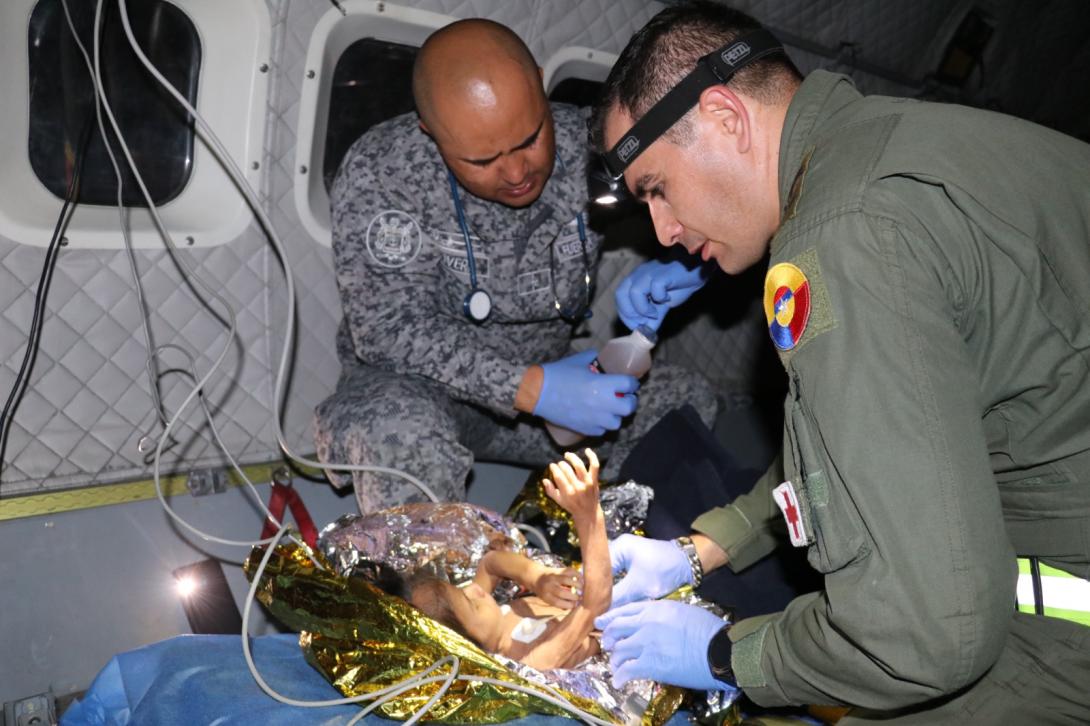The operation took 2 hours and 30 minutes.
After a combined search cell, composed of members of the Military Forces and the Murui indigenous people of Puerto Leguízamo, Putumayo, reported the finding of the four minors who had been missing since last May day after a plane crash in the jungles of Caquetá and Guaviare, the Colombian Air Force immediately activated a Casa C-295 aircraft in mass patient transfer configuration, to transport the indigenous children to Bogotá.
The configuration of the Casa C-295 aircraft began immediately once the news was known, on Friday afternoon, by non-commissioned officers of the Technical Group of the Military Transport Air Command- CATAM, who in just an hour and a half carefully modified the aircraft, adapting it as an ambulance for the mass transfer of patients.
On the other hand, a crew of medical specialists was enlisted, a team consisting of a pediatrician, a neonatologist, two nurses, two aerospace doctors, a nurse and a biomedical engineer of the Colombian Air Force Health Headquarters, who would work to stabilize the minors during the flight.
Finally, the aircraft took off at the ramp of the Military Air Transport Command in Bogotá to the José Enrique González Airport in San José del Guaviare, with military pilots trained in the use of night visors, taking into account that this airfield does not have night operation, flares were carried on board.
Once on the ground, the medical crew waited for the landing of the UH-60 Angel helicopter of the Air Combat Command No. 2 and carried out the transfer of each of the minors on stretchers to the ambulance aircraft. When it was determined that the patients were fit to fly, the return to Bogotá was undertaken, where 4 ambulances were waiting to take them to the Central Military Hospital.
The mass transfer of patients is a unique and distinctive capability of the Colombian Air Force, with which 24 stretchers with wounded personnel and 7 medical assistants or 12 intensive care units can be transported, thanks to the available area in the aircraft cabin. On this occasion, taking into account the clinical conditions of the minors, vital signs monitors were adapted for the transfer on the aircraft for the continuous monitoring of the parameters of heart rate, respiration, percentage oxygen saturation and blood pressure.
In addition, there were infusion pumps to administer medications and liquids according to medical orders and a defibrillator in case any of the patients required heart rhythm recuperation, until they reached the Central Military Hospital and received specialized care according to the state of health of each one.
In this way, the Colombian Air Force, through the deployment of its distinctive Resources, contributed to the return of the 4 brothers to their family within the framework of Operation Esperanza led by the Joint Special Operations Command, where the commitment of the Military Forces was demonstrated, in any case of emergency throughout the national territory and the ability to act jointly, coordinated and coordinated with representatives of the State and the community.





